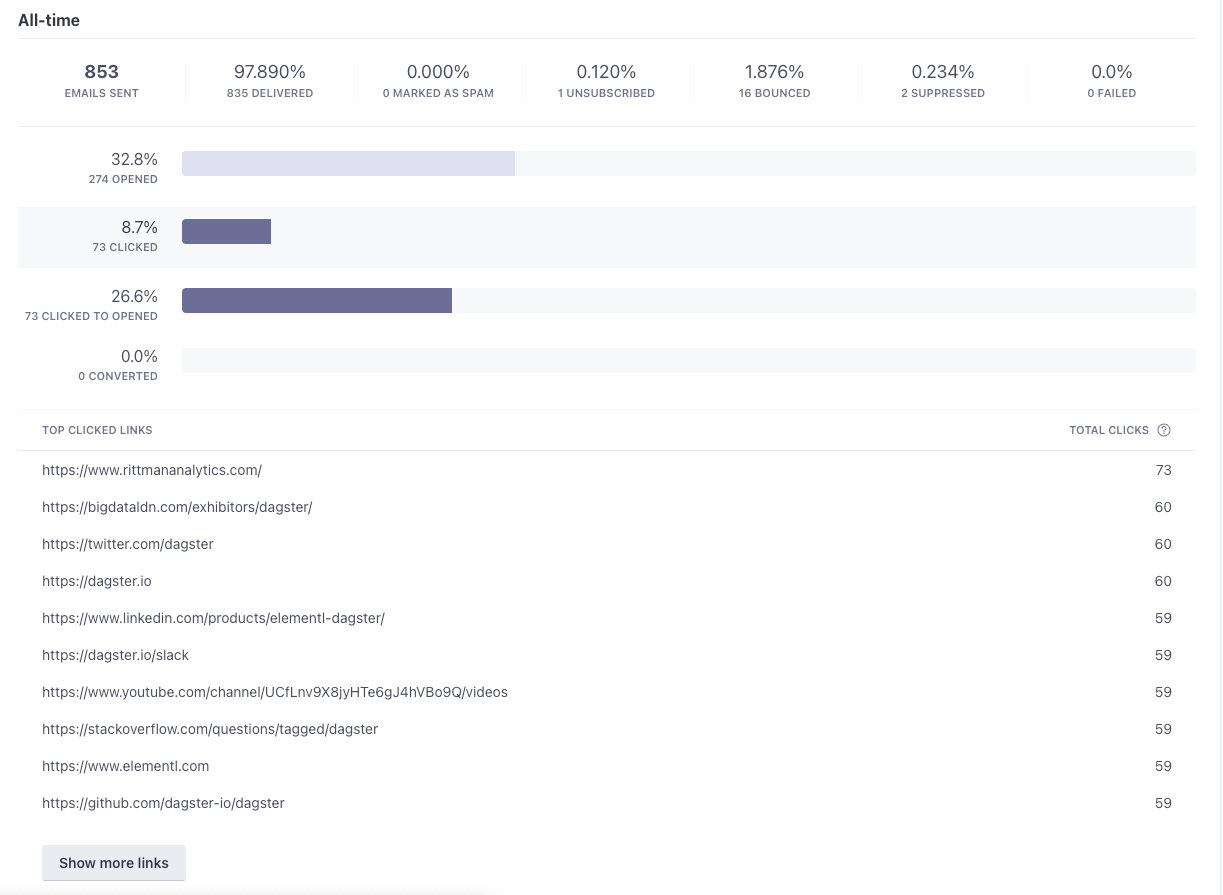Hi @frasermarlow ,
This is an issue we see come up from time to time. The similar number of click activity across the links you're seeing likely originates from automation and not genuinely from the human recipient. This pattern of click activity can be somewhat easy to spot, as it generally results in every link in your email being clicked, and the clicks usually occur very quickly after the the email is delivered.
The reasons for these "automated clicks" is usually because the email recipients' email server is running a security solution that checks links for redirection and malware and it is checking through all the email links (and resulting in the click tracking) rather than human behaviour. We commonly see these especially in large organisations, bank and financial institutions, educational institutions, government bodies where they have stricter email security measures.
That being said, we unfortunately do not have a way to rule these clicks out from our side currently. This is definitely something that we wish was more simple to isolate and prevent, however there are many different factors involved in identifying automated activity. Because of this very complex issue, we do not want to create false-positive issues that could lead to engagement events being filtered out incorrectly.
While this does create noise in your reporting which we regret, we do want to provide encouragement towards an alternative metric that can be used to measure success more accurately. That metric is conversions. As many marketers have come to agree that opens and clicks are less valuable today than ever before due to a number of factors, such as:
- automated clicking/opening caused by anti-virus software
- opens being blocked or reported incorrectly due to image proxying/caching (Apple Mail and Gmail)
- trackers being removed entirely by some email clients (such as HEY and DuckDuckGo)
...focus on conversions has become more prominent. In Customer.io we agree with this notion and have actually published a blogpost on the topic that I hope you may find helpful here: https://customer.io/blog/email-marketing-in-the-age-of-apples-mail-privacy-protection/
For example, a great conversion to measure would be to see if the customer performs a specific event or views a specific page after having opened this email. These are valuable metrics that help better define the success of the content rather than just opening and clicking.
I hope that helps to provide you with some context and and shed some light on your concerns today. This is definitely an interesting problem that we think about, but is not one we have yet been able to find a total resolution for that wouldn't lead to many false-positives. Measuring success by conversions beyond opens and clicks, however, is something that we highly recommend as a more accurate way of measuring your email's reach.

